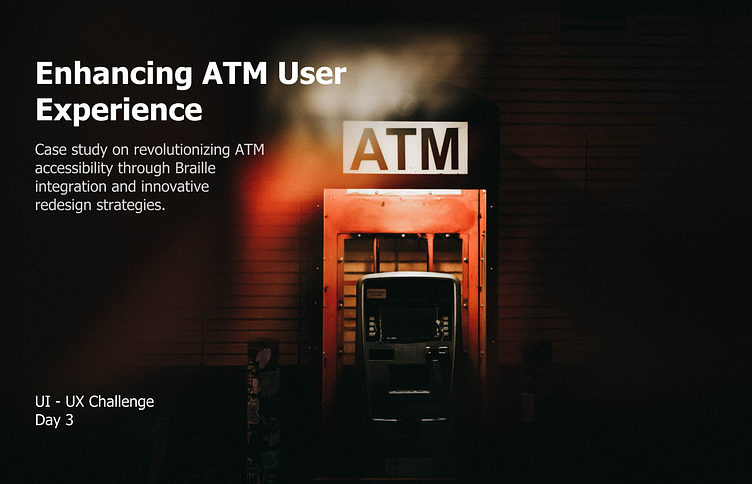Case Study: Enhancing ATM Keypad Accessibility through Braille I
Overview
Automated Teller Machines (ATMs) serve as a critical tool for financial transactions. However, the existing ATM keypad design posed significant challenges for users, especially those with visual impairments or motor skill difficulties. The lack of accessibility features and intuitive user interface elements led to errors, prolonged transaction times, and discomfort among various user groups.
The Problem
The current ATM keypad design lacked essential accessibility features, particularly for users with visual impairments or motor skill challenges. The absence of tactile elements and intuitive interface design made it challenging for users to complete transactions accurately and efficiently.
Users and Audience
The primary target audience for this solution primarily encompasses individuals proficient in the English language. While Braille integration was in English, the redesigned keyboard layout and color-coded action buttons cater to users across language preferences and abilities.
The Solution
To address the accessibility challenges and enhance user experience for all, a multifaceted solution was devised:
English Braille Integration: Braille elements in English were strategically incorporated into the redesigned ATM keypad to provide tactile guidance for visually impaired users proficient in English.
Redesigned Keyboard Layout: A new keyboard design was introduced, featuring larger and well-spaced keys to assist users with motor skill challenges, ensuring ease of use and reduced error rates.
Color-Coded Action Buttons: The action buttons were revamped with distinct color-coding—' Enter' was highlighted in green, 'Edit' in yellow, and 'Cancel' in red—to offer clear visual cues for all users, improving usability and reducing transaction errors.
Newly Designed Keyboard
The redesigned ATM keyboard features a user-friendly layout with larger, well-spaced keys aimed at enhancing usability for all users, particularly those with motor skill challenges. The revised design prioritizes ease of use and reduced error rates, ensuring a more intuitive and efficient banking experience.
Understanding Braille
Braille is a tactile writing system used by people who are blind or visually impaired to read and write. It consists of raised dots arranged in cells or patterns representing letters, numbers, and punctuation. Each cell comprises six dots arranged in a specific pattern, and different combinations represent different characters or symbols.
Research on How Blind Users Navigate ATMs
Video observations were conducted to study how blind individuals interacted with ATMs, providing valuable insights into their interactions and usage patterns. Although direct interviews with visually impaired individuals were not conducted, these observational studies offered a significant understanding of challenges faced and strategies employed by blind users while using ATMs.
The Existence of Empty Buttons
The presence of empty buttons on ATMs serves several purposes:
Standardization and Consistency: Keeping a consistent physical layout across different ATM models or versions might include extra buttons that are not currently in use but provide a uniform appearance.
Maintenance and Upgrades: Designating space for additional functionalities or upgrades in the future without needing physical alterations to the machine.
The Working Process and Actions Taken
During the redesign process: Research on Braille integration was conducted in parallel with usability testing of the redesigned keyboard layout and color-coded action buttons.
Prototypes underwent rigorous testing to validate the effectiveness of Braille integration and the usability enhancements introduced.
Conclusion
By combining Braille integration with a redesigned keyboard layout and clear color-coded action buttons, the ATM keypad design underwent a transformative change. This not only addressed accessibility challenges but also enhanced the overall usability and user experience, ensuring a more inclusive banking experience for all users.


